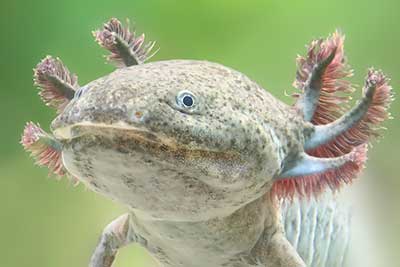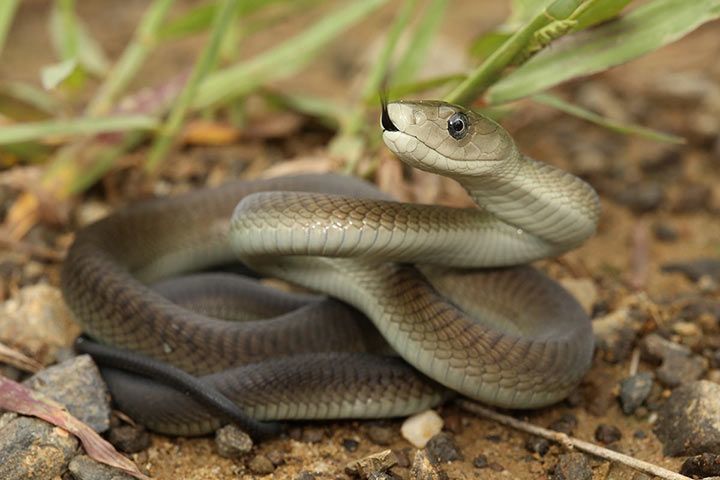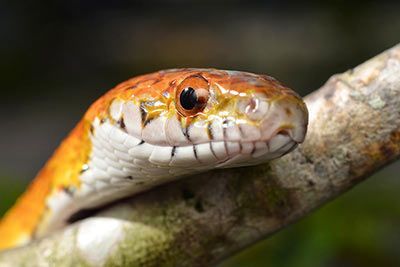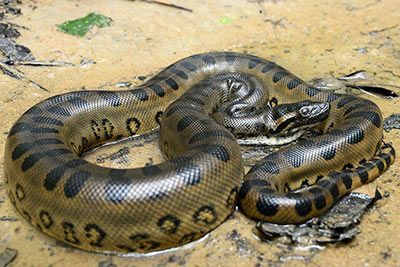Info on the Animal Classes Amphibians and Reptiles
1. Main Characteristics of Amphibians:
- Amphibians are vertebrates.
- Amphibians are ectothermic animals.
- Amphibians live on land and in the water.
- Amphibians develop from larvae into adult animals (metamorphosis).
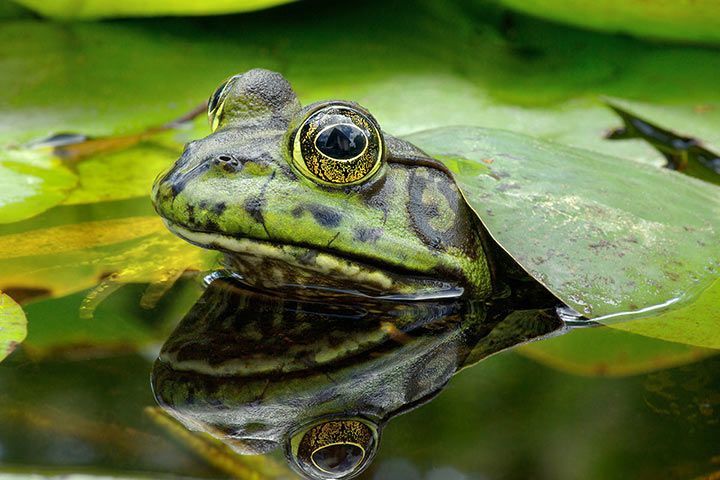
Evolution
Amphibians are vertebrates and developed from fish about 416 to 359 million years ago. The word “amphibian” derives from Ancient Greek (amphibios: “life of both kinds”). This exactly describes their way of living: Unlike fish, they can partly spent time ashore, too. Generally they are subdivided into three groups: anurans, caudates, and caecilians.
How Do Amphibians Differ From Other Animals?
The most significant difference to other animal species is the metamorphosis amphibians are going through during their lifetime (see Reproduction). Normally they have a thin and moist skin. Only toads have a dry and leathery skin.
Lifestyle
Where Do Amphibians Live?
Amphibians usually live near waters as they would dehydrate in dry regions.
What Do Amphibians Eat?
During the larval stage, most amphibians feed on plants. After the metamorphosis they almost exclusively feed on meat.
How Do Amphibians Move?
Amphibians can climb, jump, walk, crawl, swim, and dive.
How Do Amphibians Reproduce?
Most Amphibians hatch from eggs as little larvae that do not at all resemble their parents. Then they go through their metamorphosis to develop into adult animals. Metamorphosis is the Greek term for “transformation”.
Fun Facts
Amphibians Have Venom Glands
In order to defend themselves against enemies, many adult amphibians use venom that they produce in specific glands. Best known for this strategy are the poison dart frogs.
What Do Amphibians Do During Winter?
How do amphibians cope with winter? They have a few tricks to survive icy temperatures. For example, the wood frog freezes during winter and defreezes again in spring!
Species
There are about 8,600 species of amphibians:
| Frogs, toads: | 7,550 |
| Salamanders, newts, olms: | 780 |
| Caecilians: | 215 |
2. Main Characteristics of Reptiles:
- Reptiles are vertebrates.
- Reptiles are ectothermic animals.
- Reptiles have a skin consisting of scales.
- Young reptiles hatch from eggs.
Evolution
Reptiles are vertebrates and have been living on earth for more than 315 million years. They have developed from amphibians. The term “reptile“ originates from the Latin word “reptilis“, which means “crawling“. Tortoises, lizards, scaled reptiles, and crocodiles are reptiles.
How do Reptiles Differ From Other Animals?
Primarily with their skin, which is covered with scales of horn, and grows during their entire lifetime. The robust skin of crocodiles serves as a shield. Snakes and lizards have to slough their skin regularly because it does not grow with their body and becomes too small after a while. It is rather impressive to watch snakes sloughing their old skin in one piece.
Lifestyle
Where Do Reptiles Live?
Most reptiles are terrestrial animals. Others spend most of their time in the water and only sometimes come ashore (e.g. turtles).
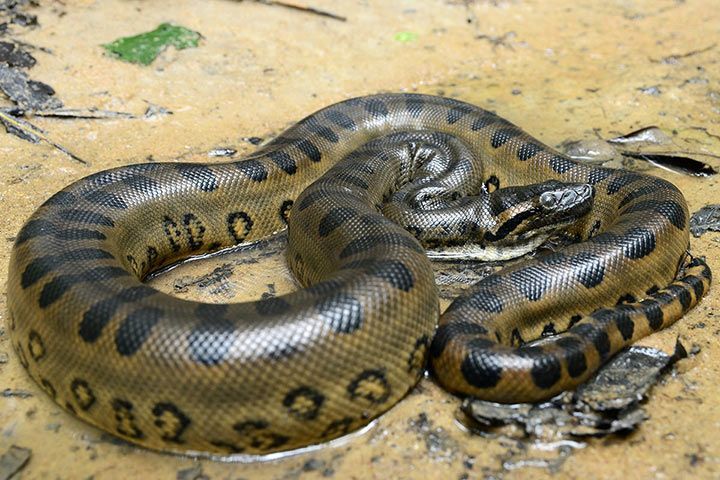
How Do Reptiles Move?
Most reptiles are good swimmers; some of them are even good at climbing. Some reptiles and snakes do not have any legs and slither along on the ground.
What Do Reptiles Eat?
Most reptiles are carnivores that feed on invertebrates, mammals, and other reptiles. Some of them also eat plants.
How Do Reptiles Reproduce?
Unlike amphibians, young reptiles do not undergo a metamorphosis (see our section on amphibians).
Fun Facts
Body Temperature of Reptiles
Reptiles and amphibians do not have a constant body temperature. They are cold-blooded animals. In order to increase or decrease their body temperature, they sunbathe or spend time in cool caves. This is the reason why they do not need as much energy as mammals.
Species
There are about 9,500 species of reptiles:
| Snakes: | 3,900 |
| Iguanas: | 2,000 |
| Skinks: | 1,275 |
| Geckos: | 980 |
| Turtles: | 360 |
| Anguimorpha: | 350 |
| Crocodiles: | 26 |
| Tuataras: | 1 |
Biodiversity
Frogs and toads somehow look all the same - and yet somehow different. There are frogs that are smaller than a 1 cent coin. Others are as big as a handbag. Learn more about biodiversity.
- Find Out More:
- The Biggest, Smallest, Loudest, Oldest ... Frogs
- Frog or Toad - What’s the Difference?
- The Longest Boas
- The Most Dangerous Venomous Snakes: Africa
- The Most Dangerous Venomous Snakes: Asia
- The Most Dangerous Venomous Snakes: Australia/New Guinea
- The Most Dangerous Venomous Snakes: Central and South America







